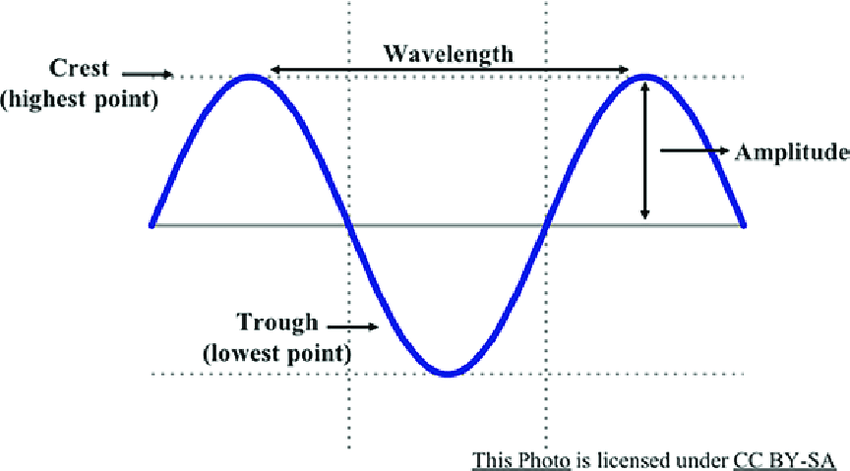Introduction
Wavelength is an essential concept in physics, serving to explain and analyze natural waves across an array of natural phenomena ranging from sounds, lights and radio waves, radio waves as well as ocean waves. Understanding wavelength is integral in understanding these natural events; from soundwaves, radiowaves or ocean waves; its definition will allow us to gain further insights. Here we delve deep into this topical 2000 word piece as we investigate this fascinating world – its definition, assessment methodologies as well as numerous applications we could find them handy for in our daily lives!
Wavelength Fundamentals I
1.1.1 What Is Wavelength?
mes Wavelength refers to the distance between any two points on an oscillation which are in phase, meaning they share equal amplitude and are located near one another during cycles. Symbolised with “l” for lambda in SI units it’s often measured in meters (m).
The wavelength plays an essential part in defining various characteristics and behavior of waves, including their frequency, speed and energy content. Understanding wavelength phenomena is critical in fields like engineering, physics and telecomms.
Relationship of Wavelength, Frequency and Speed
Frequency, wavelength and speed are intrinsic characteristics of waves which form part of their equation.
Where: V=FL for wave speeds measured in metres per second and frequency expressed as hertz frequency units respectively
L, the length of waves traveling (in meters or millimeters).
This equation illustrates that as length grows and frequency declines simultaneously; additionally its speed remains the same in any medium.
Also Read: the-bisexual-pride-flag-unveiling-its-colors-history-and-significance
II. Wavelength of Varying Wave Types
2.1 Electromagnetic Waves
Electromagnetic waves such as visible light, radio waves microwaves and X-rays play an integral part in our everyday lives. Wavelength plays an integral part in differentiating between types of waves; for instance visible light comes in many hues that all correspond with specific wavelengths (red is longer than blue light for instance).
2.2 Sound Waves
Sound waves are mechanical waves which must travel through some medium in order to propagate – be it water, air, or solid matter. Frequency (pitchyness of sound waves) correlates directly with wavelength length – shorter wavelength length for higher pitched sounds while longer length wavelength length correlates directly to their frequency in lower pitched sounds – which makes recognizing this correlation key in fields like music and acoustics.
Ocean waves are created by various factors, including wind speed and direction, depth of the water depth and seabed geometry. Their length varies greatly; from ripples just a few centimeters long up to deeper-sea waves reaching hundreds of meters long! Oceanographers, surfers, and coastal engineers rely on knowledge about wavelength characteristics as a tool to predict and harness wave energy for their purposes.
III – Measuring Wavelength
3.1 Experimental Methods
Measuring wavelength depends upon the kind of wave being investigated; electromagnetic waves offer several experimental techniques for this, including the diffraction grating and interferometer; while soundwave measurement could simply involve taking two waves’ distance apart with a ruler.
3.2 Mathematical Calculations and Formulae
At times, wavelength can be calculated mathematically using the equation for waves previously discussed. By knowing its velocity and frequency you can calculate its wavelength – an effective technique often utilized by engineers and physicists alike.
Also Read: integers-definition-rules-properties-and-examples
IV. Significance of Wavelength
4.1 Color Perception
Wavelength plays an instrumental part in our perception of colors. Every visible wavelength represents its respective hue; for instance red light has an approximate range from 700-620 nanometers whereas blue light lies between 495-579 nanometers. Our eyes recognize different wavelengths to view vivid shades throughout our environment.
4.2 Communication and Telecommunications Technologies: Overview
Wavelengths play an essential part in the telecoms industry. Fiber-optic communications utilize light-emitting fibers that transmit data; when selecting wavelength for transmission it plays a critical role in ensuring the effectiveness and performance of the system; different wavelengths may also be multiplexed simultaneously to increase the transfer rate significantly.
4.3 Medical Applications
Wavelengths play an increasingly vital role in medical diagnostics and imaging methods. Imaging techniques using X-rays use small wavelengths that produce precise images of bones and other tissues while infrared imaging relies on longer wavelengths to record heat emissions from bodies which helps with thermography as well as medical diagnosis.
Applications of Wavelength in Everyday Life
5.1 Radio and Television Broadcasts in HD for iOS
Television and radio signals travel via radio waves with different wavelengths that range from meters down to centimeters, each frequency representing one television or radio station; by tuning our TV or radio receiver to that frequency we gain access to its content.
5.2 Wi-Fi and Wireless Communication Solutions
WiFi, Bluetooth and other wireless communications technologies rely on radio waves of shorter wavelengths to transmit data wirelessly. Understanding their characteristics at various wavelengths is paramount to creating efficient networks with secure connectivity and for building reliable wireless infrastructures.
Astronomers leverage wavelength analysis in order to study celestial objects and phenomena. One such process, known as spectroscopy, analyzes light spectrum produced or absorbed through distant objects. By studying specific wavelengths within this spectrum scientists are able to discern the temperature, composition and movement of galaxies, stars or any other cosmic objects in space.
Conclusion
Wavelength is a fundamental concept at the core of understanding waves-like phenomena across numerous branches of science. Be it colors we perceive, the music we hear or data transmitted wirelessly – wavelength is an indispensable aspect of modern life that influences everything from our daily activities such as colours to music to data transmission wirelessly – from everyday colors like those we perceive through to scientific breakthroughs that require wireless transmission of data and anything related thereto. Understanding more of its relevance could reveal new technologies while opening doors into understanding our universe’s depths.
